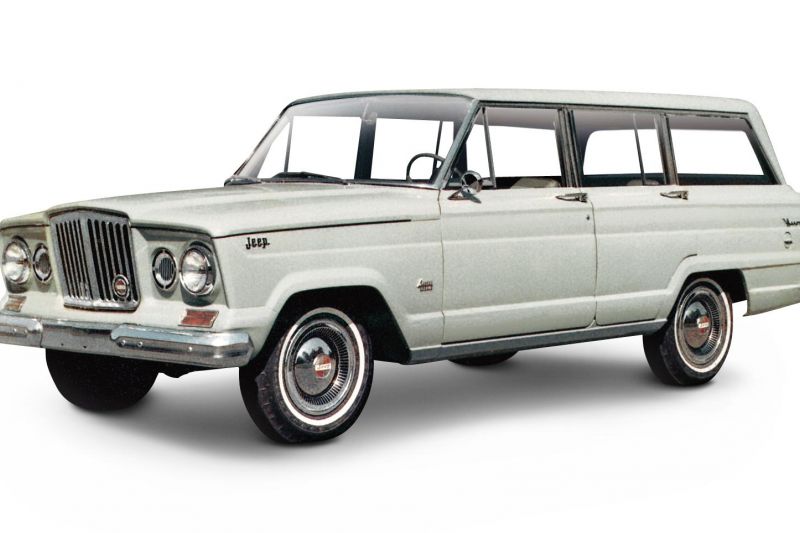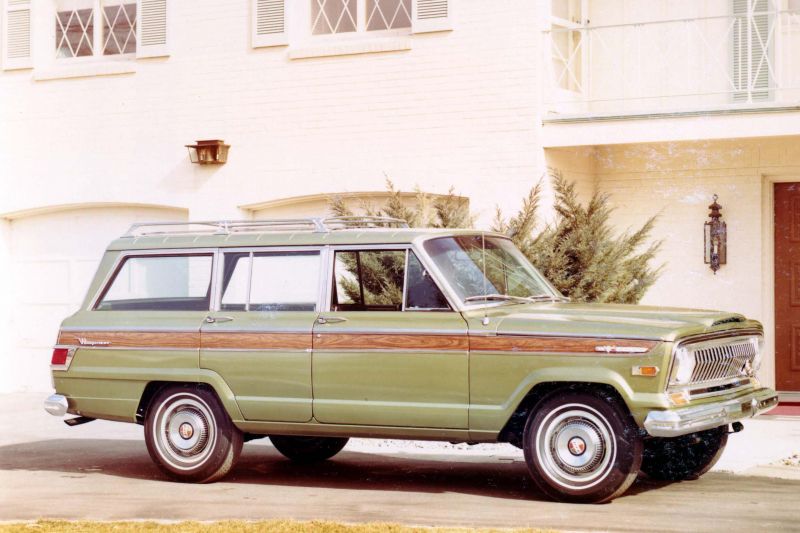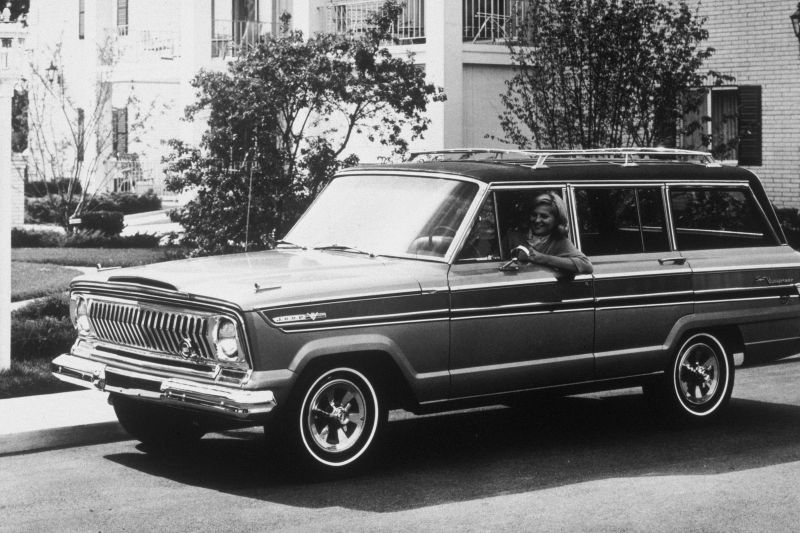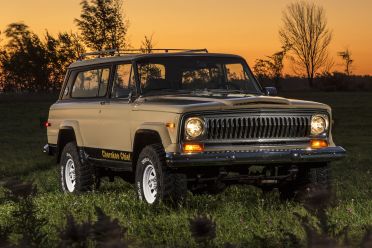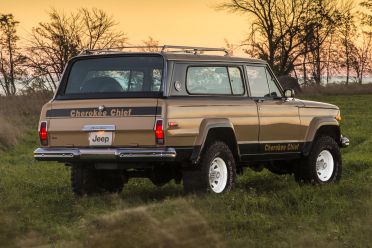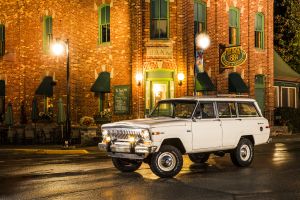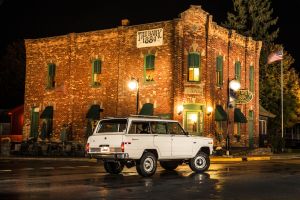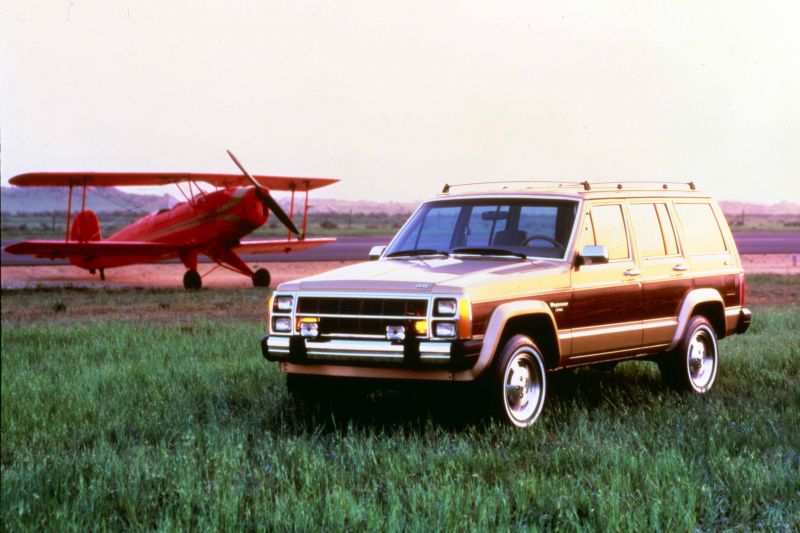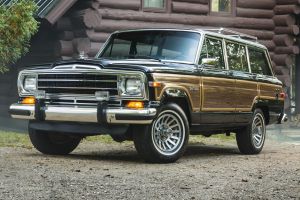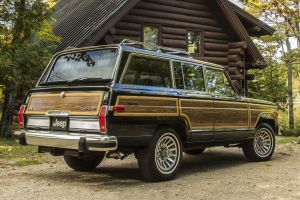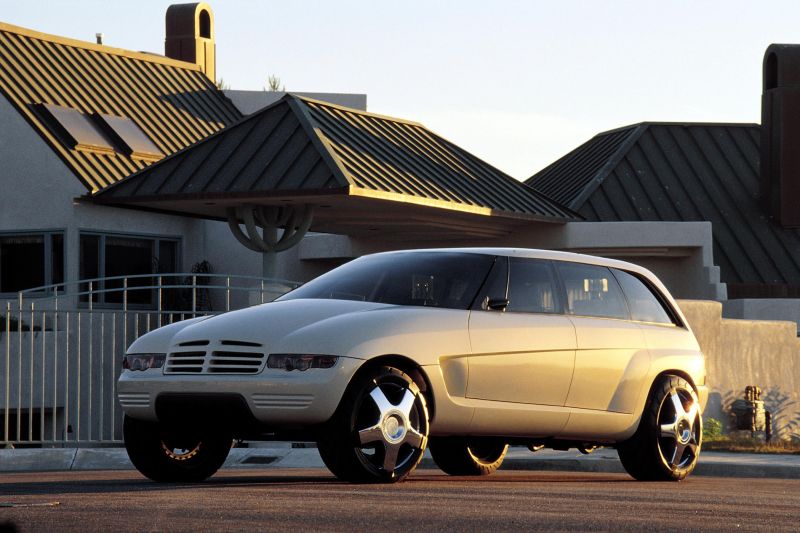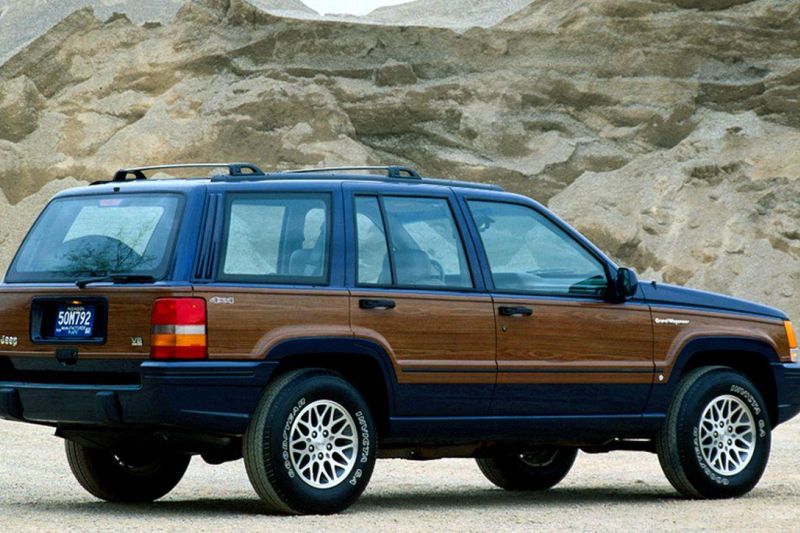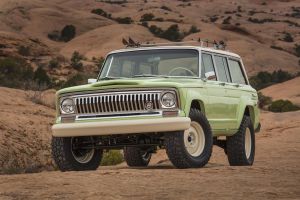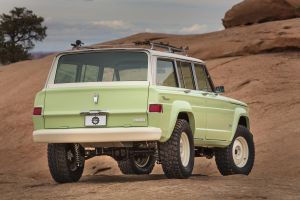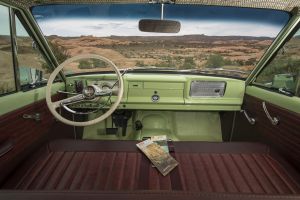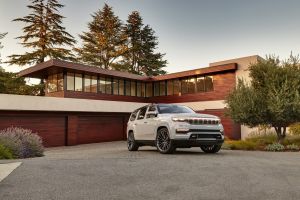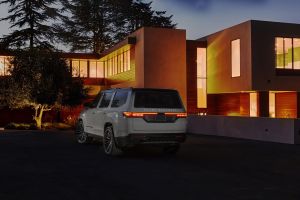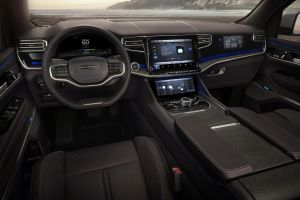It’s back, bigger than ever. Although it misses out on a woodgrain exterior, the new Jeep Grand Wagoneer finally gives Fiat Chrysler an SUV based on its popular Ram pickup truck.
The original Wagoneer had a great innings, staying in production for 29 years. Although Jeep went through multiple changes of ownership – Kaiser, AMC and then Chrysler – during the Wagoneer’s run, the car was externally unchanged throughout (mostly).
1962 – 1991 (first generation)
For many Americans, the Wagoneer pioneered the luxury four-wheel drive segment, and was launched several years before the Range Rover made its global debut in 1969.
Although the Range Rover was originally conceived with the USA in mind, it didn’t arrive Stateside until the mid-1980s.
The automotive landscape of 1960s America was dominated by large coupes, sedans, and station wagons. Pickup trucks were primarily two-door work vehicles, while four-wheel drives had a sharp off-road focus.
The Wagoneer – a high-riding vehicle with a comfortable, passenger-friendly interior – was a real outlier.
Launched in 1962 as the Jeep Wagoneer, the Grand prefix wouldn’t come into use until the car’s twilight years.
Based on the Gladiator pickup’s body-on-frame architecture, the Wagoneer was available as a two-door wagon, two-door panel van, and four-door wagon.
Initially available with a 3.8-litre straight-six with 104kW, the Wagoneer later gained V8 engine options, including units from Buick and AMC with between 170kW and 200kW.
In addition to being passenger-oriented, the Wagoneer had other innovations up its sleeve, such as pairing an automatic transmission and independent front suspension with four-wheel drive.
While the three-speed self-shifter proved popular enough, independent front suspension and rear-wheel drive did not find enough takers to survive to the end of the decade.
Early versions came with a tall, upright grille and round headlights. When the designers introduced a wide chrome grille with vertical slats a few years later they didn’t bother changing the bonnet, creating the Wagoneer’s distinctive upper gap.
While its high asking price meant it didn’t stick around long, the Super Wagoneer revealed in 1966 leaned into the car’s luxury positioning with niceties such as power-assisted steering and brakes, a tilt-adjustable steering wheel, air conditioning, and a powered tailgate.
For 1973, the Wagoneer gained a new Quadra-Trac full-time four-wheel drive system, which saved owners from rowing the manual transfer case or getting out and fiddling with manual locking hubs.
By the end of the 1960s the three-door model was dropped due to slow sales. It was, however, brought back in 1973 with a slightly different glasshouse as the Cherokee.
It wasn’t until 1975 the Wagoneer was offered with the faux wood exterior trim that became part of its cultural legacy.
Big changes hit the Jeep range in 1984. The Cherokee downsized from around 4.7m to just 4.1m long, and became a five-door model with its own platform.
The Wagoneer name also made the jump to the new, much smaller Cherokee as a more luxurious trim level. In addition to stacked headlights and a different grille treatment, it featured (you guessed it) a wood-themed exterior.
The original car remained on sale, though, and was rechristened as the Grand Wagoneer with leather upholstery, air conditioning, extra sound proofing, an AM/FM/CB radio, and exterior wood trim all standard.
A few years later it gained a new padded dashboard for a slightly more modern look, as well as modern conveniences like keyless entry.
By 1991 sales were below five-figure mark thanks to a lingering recession, and the car’s old age.
1991 Wagoneer 2000 (concept)
Don’t let its sleek shape fool you. The Wagoneer 2000 was a big beast, measuring 5.0m long, 2.04m wide and 1.7m tall, with a 3.5m wheelbase.
It rode on 20-inch alloy wheels with 335mm wide tyres. Although not a runner, the concept was claimed to be powered by a 5.2-litre V8.
Styling-wise, there’s little to tie the Wagoneer 2000 to the first-generation car, except for the nostrils above the grille. Like the upcoming model, the Wagoneer 2000 was envisioned as a tech pioneer, and featured a CRT TV screen in the dashboard.
“Second generation” and “third generation”
The Grand Cherokee was launched around a year after the Grand Wagoneer’s demise, and despite its slightly smaller dimensions sat at the top of the Jeep range.
In 1993, it gained a new Grand Wagoneer range-topper, which featured better leather and faux woodgrain trim pieces for the exterior.
Axed by the next model year, it seemed as though the era of the woody was dead. But Jeep doesn’t quit, and in the 2000s tried again. Mopar briefly offered a dealer-fit Wagoneer fake wood trim kit for the Liberty, or Cherokee for the rest of the world.
With news spreading Fiat Chrysler was at work on a belated successor to the Grand Wagoneer, the company brought out the Wagoneer Roadtrip restomod at the 2018 SEMA Show.
It had a reinforced chassis, widened body, and an interior retrimmed to match the exterior body work.
2021 – (second generation)
Almost 30 years after the first-generation’s demise, the Grand Wagoneer is back. It shares certain philosophical elements with its predecessor: body-on-frame architecture, a focus on luxury, and a range-topping positioning.
It even has a retrolicious chromed-up take on the company’s now-mandatory seven-slot grille.
With its body-on-frame architecture, it will be a challenger for the ever-popular Chevrolet Tahoe and Suburban. You can read more about the new Grand Wagoneer here.





